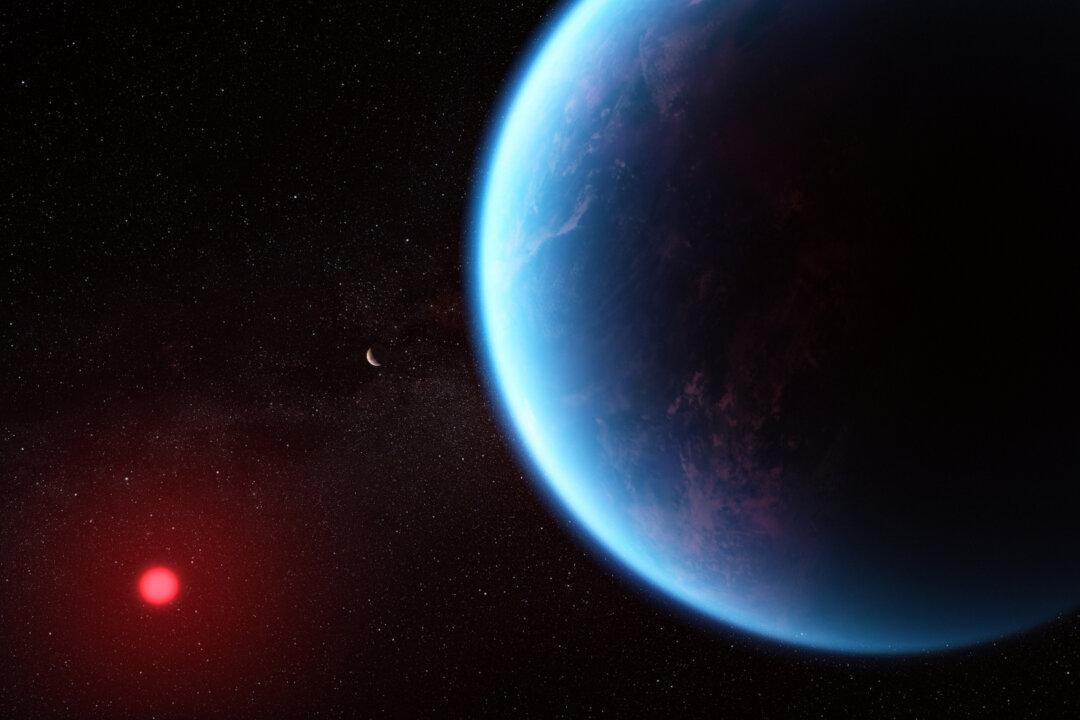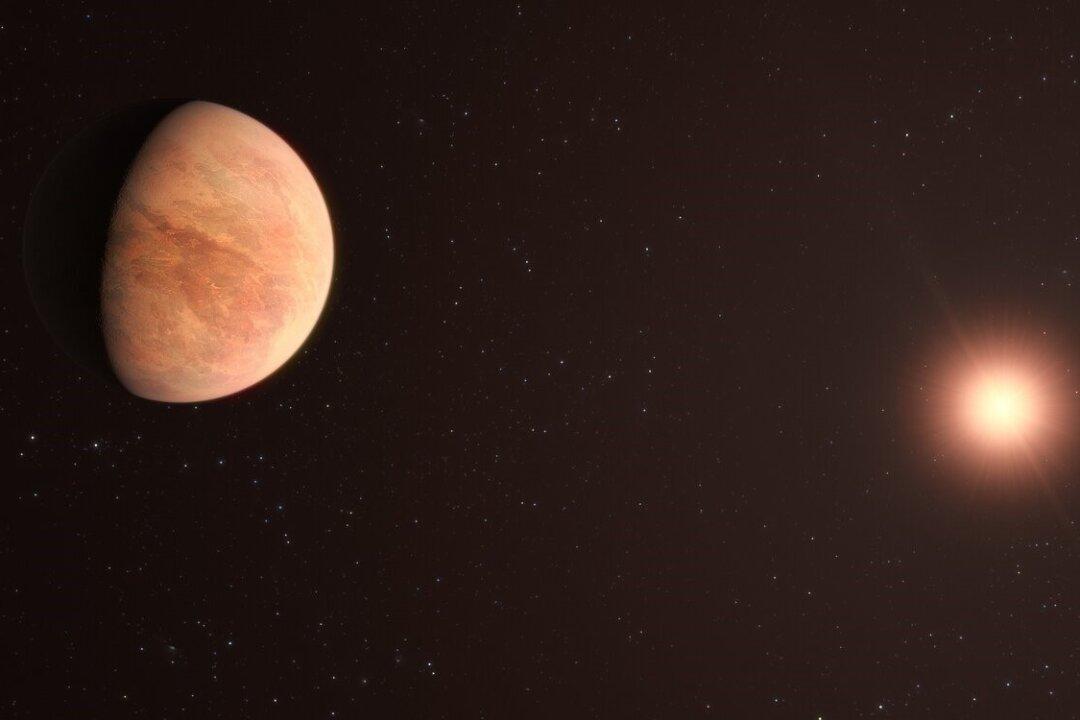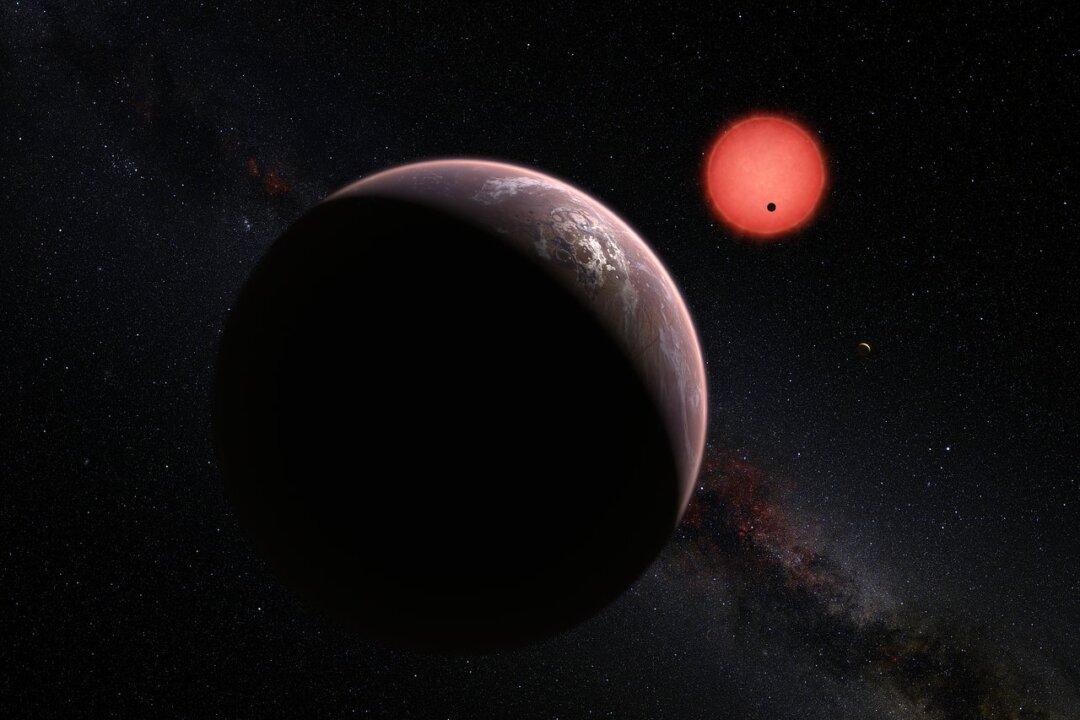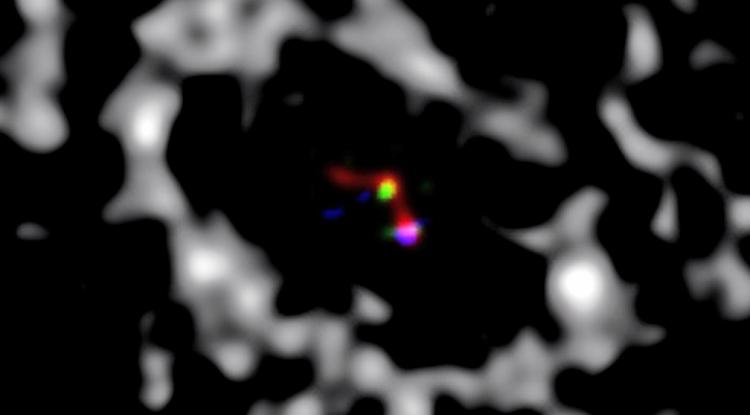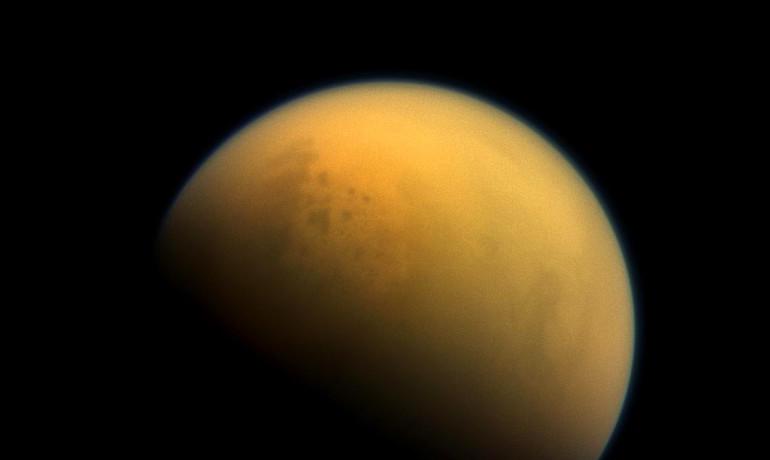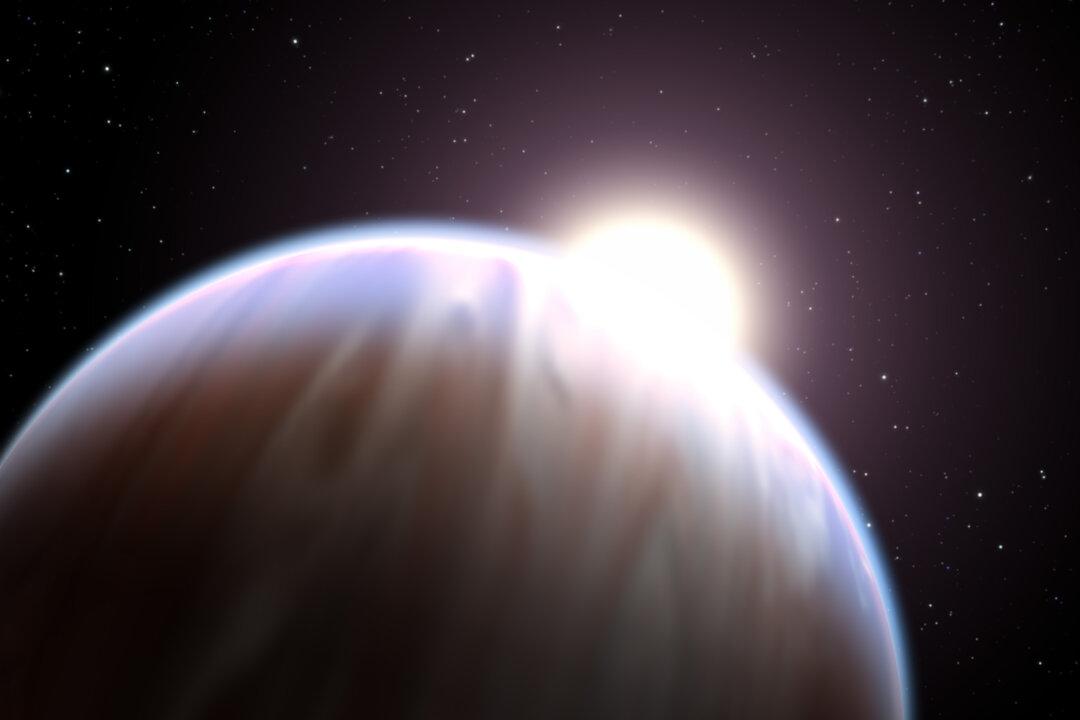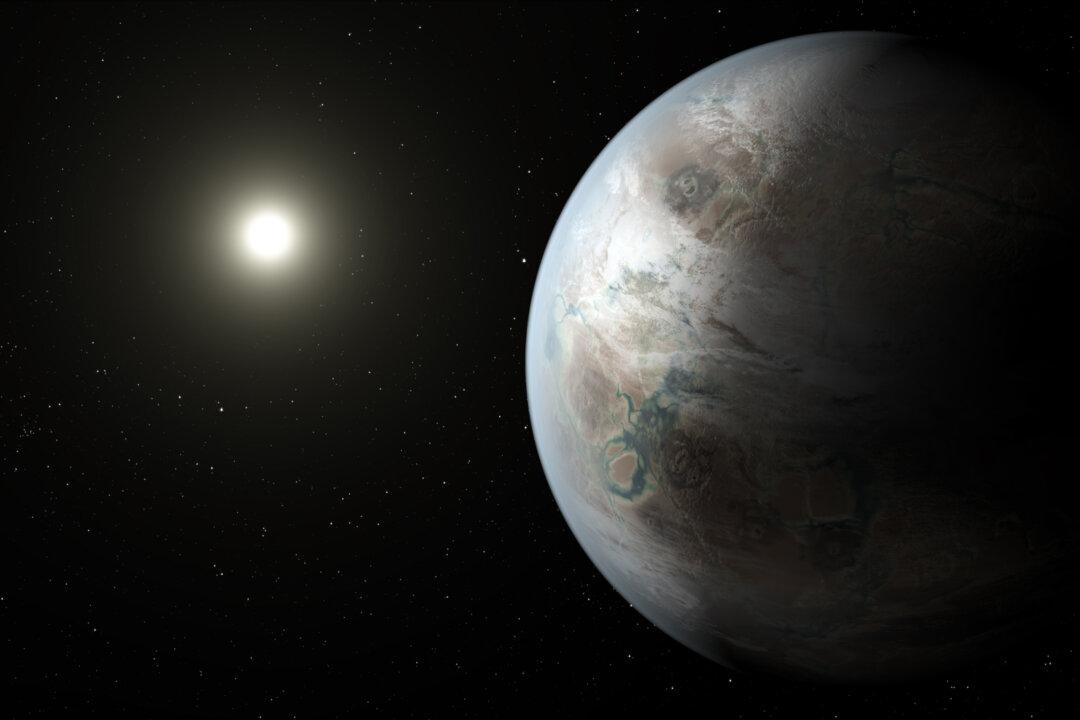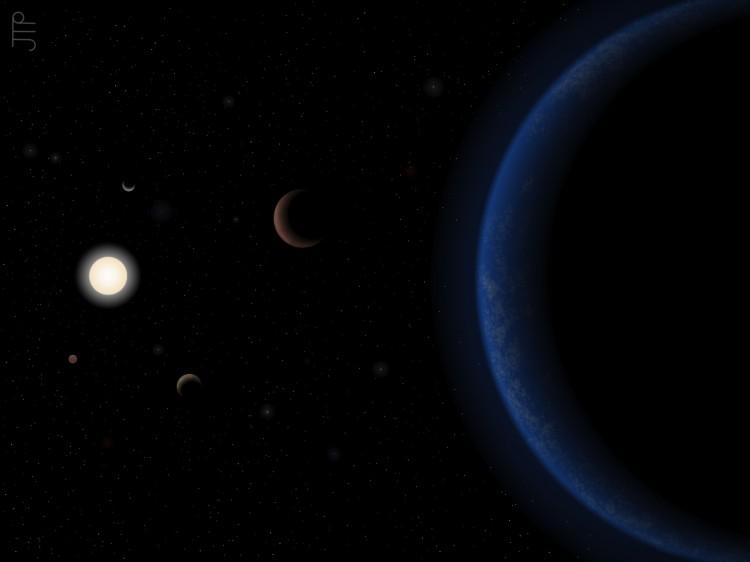Focus
exoplanets
NASA Detects Possible Signs of Life on Planet in Distant Solar System
NASA has discovered an Earth-like exoplanet in a habitable zone known to harbor carbon-bearing molecules—meaning the planet may support life.
|
Scientists Dig Up Earth’s Oldest Fossil (Video)
The newly discovered fossil is 3.77 billion years old.
|
Three Planets That May Be Able to Support Human Life Are Discovered
Three planets, that have just the right temperatures to possibly support life as we know it, have been discovered. The trio orbit a star 40 light years away and are much cooler and dimmer than our sun, researchers say.
|
This Picture Shows a Planet Being Born
Scientists are watching the birth of a planet orbiting a star 450 light years away and say what they learn could answer some of the biggest questions concerning how planets form around other stars.
|
Can an Exoplanet’s Orange Haze Indicate Life?
An atmospheric haze around a distant planet—like the one which probably shrouded and cooled the young Earth—could show that the world is potentially habitable, or even be a sign of life itself.
|
Astronomers Stunned to Find ‘Hot Jupiter’ With Companions
During the past two decades, astronomers have discovered 300 “hot Jupiters,” but for the first time they’ve found one that has two close-in planetary companions.
|
Whatever the Strangest Star in the Galaxy Is, It’s Sure to Be Amazing
For the past few days, the media has been abuzz with one of the most peculiar astronomical observations for many years.
|
New Exoplanet Is the Closest Yet to ‘Earth 2.0′
Astronomers have discovered a planet that could be Earth’s older and bigger cousin.
|
Scientists Find Closest Thing Yet to Earth-Sun Twin System
Scientists have identified a “close cousin” to Earth that’s orbiting a sun-like star and might harbor life.
|
Astronomers Watch the Birth of Jupiter-Like Planet
At “just” 335 light years away, HD 100546 is one of our near cosmic neighbors, and its age of five to ten million years makes it relatively young in astronomical terms.
|
Color Key to Aid Search for Life on Exoplanets
To help find life beyond our solar system, scientists have created a colorful catalog containing reflection signatures of Earth life forms that might be found on the surfaces of far-flung planets.
|
Newly Discovered Exoplanets are Most Earth-Like Ones Ever Found (Video)
Two new exoplanets discovered via NASA’s Kepler Space Telescope are more like our own planet than any far-off celestial body ever examined.
|
Could Life Exist on ‘Fried’ Exoplanets?
Exoplanets are prime targets in the search for extraterrestrial life, but intense heat during early years may have left some uninhabitable, say astronomers.
|
Scientists Search for Civilizations on Likely Planets
U.S. researchers have narrowed down their search for radio signals from intelligent life among the stars.
|
Growing Giant Planets Guzzle Gas Streams
The Atacama Large Millimeter/submillimeter Array (ALMA) telescope has revealed huge streams of gas crossing a gap in the disc of matter orbiting a young star—a hypothesized stage in the formation of giant planets like Jupiter and Saturn.
|
Nearest Sun-Like Star May Host Habitable Planet
Tau Ceti, one of our closest sun-like stars, has a planetary system, including a world in the habitable zone.
|
NASA Detects Possible Signs of Life on Planet in Distant Solar System
NASA has discovered an Earth-like exoplanet in a habitable zone known to harbor carbon-bearing molecules—meaning the planet may support life.
|
Scientists Dig Up Earth’s Oldest Fossil (Video)
The newly discovered fossil is 3.77 billion years old.
|
Three Planets That May Be Able to Support Human Life Are Discovered
Three planets, that have just the right temperatures to possibly support life as we know it, have been discovered. The trio orbit a star 40 light years away and are much cooler and dimmer than our sun, researchers say.
|
This Picture Shows a Planet Being Born
Scientists are watching the birth of a planet orbiting a star 450 light years away and say what they learn could answer some of the biggest questions concerning how planets form around other stars.
|
Can an Exoplanet’s Orange Haze Indicate Life?
An atmospheric haze around a distant planet—like the one which probably shrouded and cooled the young Earth—could show that the world is potentially habitable, or even be a sign of life itself.
|
Astronomers Stunned to Find ‘Hot Jupiter’ With Companions
During the past two decades, astronomers have discovered 300 “hot Jupiters,” but for the first time they’ve found one that has two close-in planetary companions.
|
Whatever the Strangest Star in the Galaxy Is, It’s Sure to Be Amazing
For the past few days, the media has been abuzz with one of the most peculiar astronomical observations for many years.
|
New Exoplanet Is the Closest Yet to ‘Earth 2.0′
Astronomers have discovered a planet that could be Earth’s older and bigger cousin.
|
Scientists Find Closest Thing Yet to Earth-Sun Twin System
Scientists have identified a “close cousin” to Earth that’s orbiting a sun-like star and might harbor life.
|
Astronomers Watch the Birth of Jupiter-Like Planet
At “just” 335 light years away, HD 100546 is one of our near cosmic neighbors, and its age of five to ten million years makes it relatively young in astronomical terms.
|
Color Key to Aid Search for Life on Exoplanets
To help find life beyond our solar system, scientists have created a colorful catalog containing reflection signatures of Earth life forms that might be found on the surfaces of far-flung planets.
|
Newly Discovered Exoplanets are Most Earth-Like Ones Ever Found (Video)
Two new exoplanets discovered via NASA’s Kepler Space Telescope are more like our own planet than any far-off celestial body ever examined.
|
Could Life Exist on ‘Fried’ Exoplanets?
Exoplanets are prime targets in the search for extraterrestrial life, but intense heat during early years may have left some uninhabitable, say astronomers.
|
Scientists Search for Civilizations on Likely Planets
U.S. researchers have narrowed down their search for radio signals from intelligent life among the stars.
|
Growing Giant Planets Guzzle Gas Streams
The Atacama Large Millimeter/submillimeter Array (ALMA) telescope has revealed huge streams of gas crossing a gap in the disc of matter orbiting a young star—a hypothesized stage in the formation of giant planets like Jupiter and Saturn.
|
Nearest Sun-Like Star May Host Habitable Planet
Tau Ceti, one of our closest sun-like stars, has a planetary system, including a world in the habitable zone.
|

